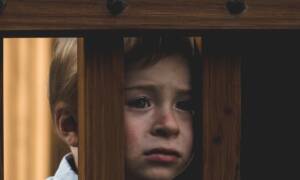The outbreak of COVID-19 coronavirus has slumped the dynamics of the world. The surge in corona infected patients has disrupted various aspects of life in the US. Coronavirus has badly hit the education system all around the world, including the US.
Most of the countries have completely shut down their education system including public and private schools, colleges and universities.
The pandemic doesn’t seem to slow down its infection rates and things look quite troublesome for the future.
Coronavirus has hit 91% of the education system badly all around the world. However, US governments are doing their best to control the situation.
Schools are expected to remain closed till the end of 2019-2020 school year.
Nonetheless, we are still not sure of the current situation and the lockdown might be extended into the summer for many countries.
A professor from John Hopkins predicted in early March that the US was to face 250,000 to 500,000 cases in the coming months.
His predictions on the basis of previous data were quite accurate given the number of cases we see in the US right now.
The outbreak of this disease has drastically impacted the social sector of the US, including the education system.
Bryan Alexander, a professor at Georgetown University; has estimated at least 14 million college students across the country that might get affected due to the current situation.
Prevailing Situation at the Hardest-Hit City New York
As this contagious virus flares-up around the streets of New York, the mayor of the city, Bill de Blasio has announced to shut the public school system for the rest of the academic year.
However, remote learning will still be continued.
As per the recent reports, approximately 1.1 million students across the city are transitioned to the e-learning platform. Among these, almost 73% of the students are economically deprived.
Moreover, teachers of the public schools have complained of being unprepared for this mode of teaching. Rebecca, one of the teachers at a local school, said that she has not been provided with adequate guidance and training on digital learning by the school authorities.
Although the on-going situation is difficult to tackle, the government aims to sought it by providing Wi-Fi devices to financially disadvantaged students as well as training and resources for teachers to conduct online classes.
Furthermore, the New York Department of Education has ensured to operate “meal hubs” at various schools across the city, which will provide free meals to anyone looking to have a hot meal.
Apart from New York, many hard hit states and cities including Houston, Seattle, San Francisco, Washington DC and Los Angeles have shut the educational institutes to curb the outspread of this infectious disease.
Crisis For Higher Education System
Not only schools but several major colleges and universities including Harvard, Princeton, Columbia, Yale, and Brown have switched to virtual learning.
The University of Washington was the first one to take this initiative. So far, approximately 1,102 colleges and universities have been shut and moved to digital learning.
In order to abate the spread of disease, university authorities have urged the students to stay at home after spring-break, and attend classes remotely through online platforms.
Director of international admissions at Miami University said that school is trying to maintain a balance between public health protection and uninterrupted learning.
The authorities of Harvard University have asked students to move out of their dorms, and this has caused chaos among international students as traveling is banned across the globe.
Later on, the authorities decide to review the decision and exempt students who reside in countries where traveling is banned or coronavirus outburst is at a high level.
Besides this, many other universities have given an option for students to return back to their permanent residence or to stay back at campus. But they are mandated to maintain hygiene and social distance.
International Students also faced concerns related to their visa status, as the US government allowed them to take one online course per semester only.
However, amid of existing circumstances, the authorities have given temporary flexibility to such students so that their learning process is not hampered.
An initiative of the US Department of Education
To combat the adverse impact of this pandemic, the US Department of Education ensured to provide flexible incentives to colleges and universities so that the education system across the country would not be impeded.
Under the leadership of US Secretary of Education, Betsy DeVos, the US department of education initiated immediate actions to support the students in universities and colleges.
A higher education policy, K-12, has been announced by the U.S. Department of Education according to which the requirements of standardized tests for the US states affected by the coronavirus will be waived.
Education Secretary, Betsy DeVos, stated that students will be unlikely to perform under the current conditions and environments.
The department has also announced that for the next 60 days, the interest rates on the student loans will be automatically set to 0%.
The option for the suspension of payments for two months without the accumulation of interest was also provided to the borrowers on the condition that they have to apply for these terms by contacting their loan providers online or via phone, which is difficult in this condition as many services have been disrupted.
On 9th April 2020, Betsy DeVos announced the immediate distribution of more than $6 billion to universities and colleges.
This amount is provided as emergency cash funds to those students whose life and education have been meddled due to the COVID-19 pandemic.
The colleges and universities are required to utilize this $6 billion for facilitating things like course material, food, technology, and health care to students.
To acquire these funds, the institutions are required to provide a signed certificate to the US Department of Education stating; the funds will be granted to the students following the applicable law.
The students receiving these cash grants will be determined by the college or university.














